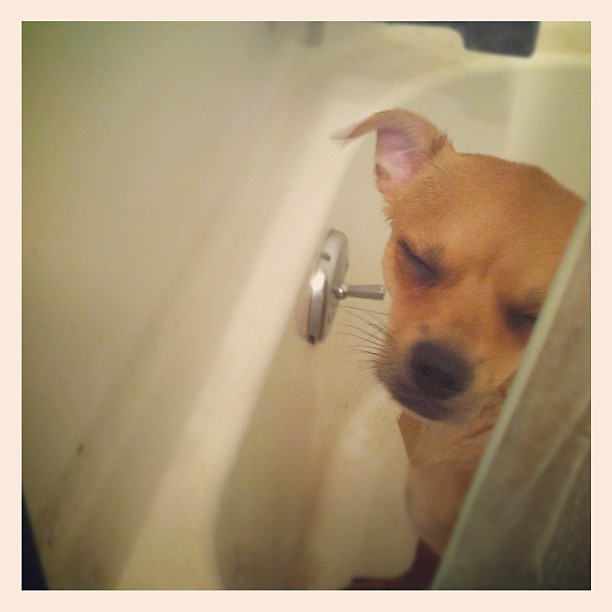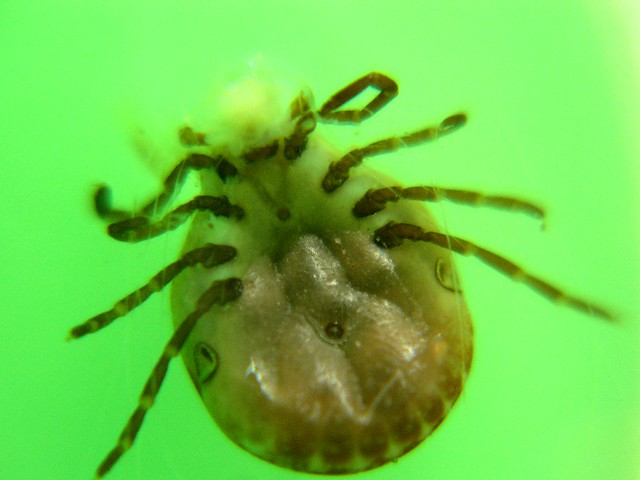 |
| Photo by Mr. TGT |
Like humans, dogs develop certain diseases too when they are overweight. These diseases will lead to more serious complications including death. So for people who wish to know the repercussions of obesity in dogs, here are some of the known consequences:
1. Arthritis
Obesity in dogs tends to put extra weight on their bones. In turn, the joints and other parts of the dog’s bones develop arthritis.
Excess weight in dogs may also initiate the development of other muscle and joint problems like spinal disc disease, hip dysplasia, and cracks in the joint ligaments.
2. Diabetes
Like humans, dogs can get diabetes too. We all know for a fact that overweight cause diabetes in humans, this can also happen in dogs. This is because the more fat is stored in the dog’s body, the greater its system will generate insulin in order to cope up with its growing mass. Hence, dogs have the tendency to resist too much insulin in the body. The end result is diabetes.
3. Skin problems
Obesity in dogs can cause some skin problems. This is because excess fat deposits are being stored in their skin; hence, their owners are having a hard time grooming them. When dogs lack proper grooming, there is a tendency to accumulate bacteria, dirt, or other elements that could cause harm to your dog’s skin. In the end, they develop rashes, skin ruptures, and infections.
4. Capacity to tolerate heat
With too much fat deposits accumulated in their skin, dogs are more inclined to problems concerning heat tolerance. This is because dogs find it hard to tolerate heat due to the build-up of fats in their skin. That is why most obese dogs are prone to heat stroke especially during summer time.
5. Respiratory problems and other heart diseases
Like humans, obese dogs have also the tendency to develop respiratory problems and heart diseases. This is because the chest cavity is already covered with thick fat deposits. Hence, whenever the dog breathes, the lungs are having a hard time to expand, so does the heart. The problem starts when the heart and the lungs can no longer produce the right amount of oxygen and circulate it within the dog’s body.
6. Gastrointestinal problems
Obesity in dogs causes some problems in their intestines and pancreas. This problem results in the inflamed pancreas, which, in reality, is very painful to the dogs and can also cause death among them.
7. Liver problems
Fats are harder to strain and this can pose a great problem to the dog’s liver. Hence, when the liver can no longer function well because of the fat deposits that accumulated in the area, liver problems may occur and may even cause the death of your dogs.
These health problems are indeed life-threatening. And so, it depends upon the owner how to combat these problems in order to keep their dogs healthy.
One of the greatest ways in solving weight problems is a strict exercise schedule. So, it is a must that owners should create a healthy exercise schedule for their dogs. This can be done by tagging them for a walk every afternoon or letting him run through a field.
The best thing about this program is that not only the dogs get the chance to exercise but their owners as well. So, it’s a double result with just one purpose.
Next is to create a healthy diet for your dogs. Diet meals are extremely important for dogs so that they can still obtain the necessary nutrients they need in order to stay healthy. This should include the right combination of fiber, meat, vegetables, vitamins, and minerals.
However, dog owners should always keep in mind that when their dogs are taking fiber, more water should be employed so as to prevent constipation.
Alternatively, dog owners should also remember that before incorporating all of these things to your dog, it’s best to consult the veterinarians first. In this way, only the proper methods of dieting for dogs shall be employed.
So, for healthier and happier dogs, give them the best love and care you can give plus a great dietary regimen. As they say, a healthy dog is a happy dog.














